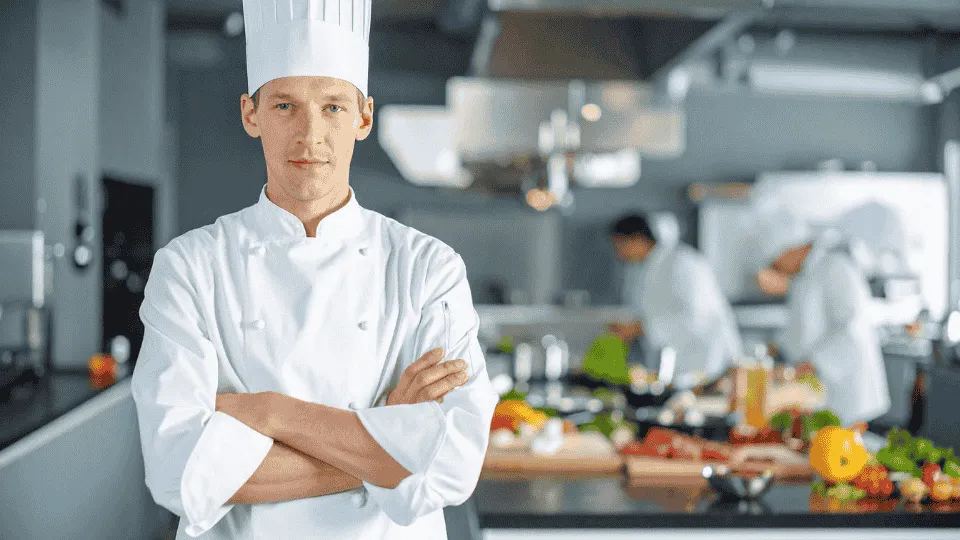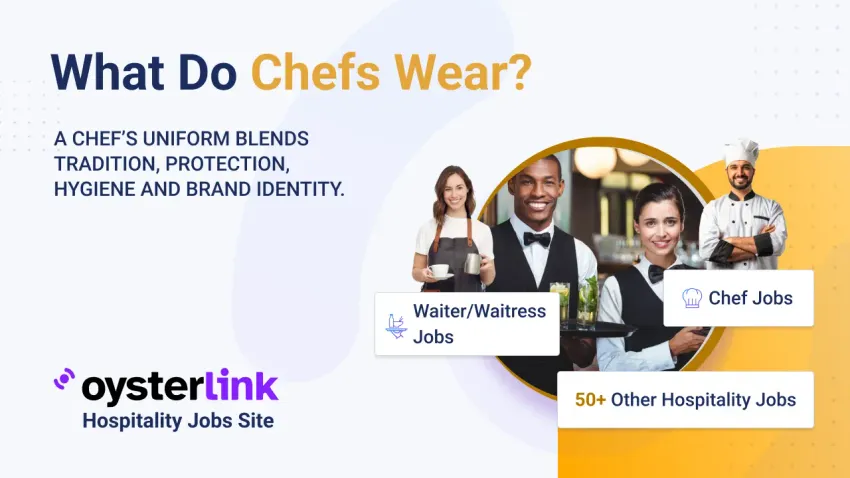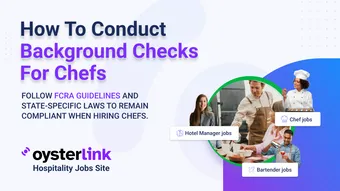In this article, we discuss the importance of proper Chef attire, the garments that comprise it and its modern variations.
What Do Chefs Wear?
Chefs typically wear a complete uniform designed for safety, hygiene and professionalism.
This includes a double-breasted jacket to protect against heat, a toque or hat to keep hair secured, durable pants that allow movement, a waist apron for added protection and slip-resistant shoes for stability in busy kitchens.

Each piece serves a practical purpose while contributing to a clean, consistent appearance in the kitchen.
History of Chef Uniforms: Why They Matter
The Chef's uniform has a rich history that dates back centuries, evolving to meet the changing needs of culinary professionals.
In the 16th century, Chefs began wearing full-length aprons and large hats to protect themselves from the heat and mess of the kitchen, while also showcasing their status and professionalism.
In the 19th century, French chef Marie-Antoine Carême popularized the white double-breasted jacket, symbolizing cleanliness and allowing Chefs to easily spot any dirt or stains in a busy kitchen environment.
The traditional Chef’s hat, known as the toque blanche, became a symbol of authority and experience, with the number of pleats representing the number of techniques a chef had mastered.
Understanding the history of the Chef's uniform provides insight into its significance and the traditions that continue to influence culinary attire today.
Importance of Proper Chef Attire
Professional Cooks need to wear proper Chef attire for a few practical and symbolic reasons.
First and foremost, it promotes safety. Chef pants and Chef jackets are typically made out of double-thick cotton to protect against burns, steam and stains.
Most Chef garments are white and are specifically designed to promote breathability in hot kitchen environments.
Professional chef wear also helps prevent contamination. The Chef’s hat, for example, keeps hair and sweat away from food.
Chef uniforms also support brand awareness and professionalism. Restaurants can customize them with logos or names to create a distinct, recognizable look.
Traditional Chef Uniform Components
Also known as Chef whites, traditional Chef uniforms date back to the 19th century. They consist of a double-breasted jacket, checkered pants and a toque blanche. Each piece has its own purpose and historical meaning.
Why Chef Hats Are Iconic and Important in the Kitchen
“Toque blanche” is French for “white hat.” It's one of the most iconic pieces of Chef clothing. In the past, the height of the toque indicated the Chef’s position in the kitchen hierarchy.
The higher the hat, the higher the rank. The number of pleats the Chef's toque had denoted the number of recipes they had mastered.
Nowadays, the toque blanche has fallen out of favor. While many traditional and Michelin-star restaurants still use it, most establishments allow Chefs to wear alternative Chef headwear such as beanies, baseball caps, skull caps and bandanas.
What Makes Chef Jackets Essential for Kitchen Safety
Chef jackets have a few features that make them super functional and practical. The double-breasted design provides an extra layer of protection from heat and hot spills.
They're usually made out of heavy cotton or a mix of cotton and polyester to make them more breathable.
Chef jackets are white since that’s the color associated with cleanliness, encouraging Chefs to uphold hygiene in the kitchen.
The jacket allows Chefs to easily cover noticeable stains if they need to interact with customers and don’t have time to change.
Why Chef Pants Are Key for Comfort and Safety
Chef pants need to be functional and durable. They’re typically made from tear-resistant, lightweight fabric and feature multiple accessible pockets that make a Chef’s daily tasks easier.
The loose design also supports freedom of movement — something essential when working long hours in a hot, fast-paced kitchen.
Here’s a quick video showing the type of patterned Chef pants often worn in professional kitchens:
Traditional Chef pants commonly use a black-and-white houndstooth pattern, a style that has been part of culinary culture since the 19th century and is still preferred by many Chefs today.
The pattern isn’t just historical — it was intentionally designed to disguise stains and spills, helping Chefs maintain a cleaner appearance throughout service.
The contrast of the pattern also helps reduce visual distractions in a busy kitchen, allowing Chefs to stay focused and move safely.
Combined with an elasticated waist for comfort and flexibility, every element of Chef pants is built to support a cleaner, safe and more efficient workflow.
Choosing the Right Chef Shoes for Comfort & Safety
Proper footwear is crucial for chefs, providing comfort during long hours and ensuring safety in the kitchen. This short video shows Chefs sharing their favorite shoes to wear in a professional kitchen:
Chefs typically choose slip-resistant shoes that offer support and protection from spills and fast-paced movement. Materials like durable leather or rubber are common because they’re easy to clean and can withstand the demands of a busy kitchen.
Some chefs prefer clogs for their comfort and ventilation, while others opt for secure lace-up shoes designed specifically for food-service environments. Choosing reliable, supportive footwear helps prevent injuries and keeps chefs moving efficiently throughout their shift.
How Chef Aprons Protect Against Spills and Burns
While not always considered part of the traditional Chef's uniform, aprons play a crucial role in modern culinary attire.
They provide an additional layer of protection against spills, stains and heat, safeguarding both the Chef's clothing and skin.
Aprons are available in various styles, including bib aprons that cover the chest and waist aprons that protect the lower body.
Materials such as heavy-duty cotton or denim are commonly used for durability and ease of cleaning. Some aprons also feature pockets for holding essential tools, enhancing functionality in a bustling kitchen environment.
The Purpose of Chef Neckerchiefs in the Kitchen
Neckerchiefs, or neckerchieves, are traditional accessories in a Chef's uniform. Originally, they served to absorb sweat and provide comfort in hot kitchen environments.
Tied around the neck, they also add a touch of professionalism and can be used to display rank or affiliation through various colors and tying styles.
Chef Towels: A Must-Have for Hygiene and Safety
Chef towels are essential tools in the kitchen, used for handling hot cookware, wiping hands and maintaining cleanliness.
Typically made of cotton for its absorbency and heat resistance, these towels are kept within easy reach, often tucked into the apron or waistband.
Proper use of Chef towels contributes to both safety and efficiency in a bustling kitchen.

Modern Variations in Chef Attire
For the most part, Chef attire has remained largely the same for the past few decades. However, some modern variations and trends have emerged relatively recently.
Many garments are made using materials that promote moisture-wicking and breathability. Organic cotton and recycled fibers are both sustainable and eco-friendly materials that modern Chef attire uses in its construction.
Besides that, Chefs are leaning towards comfortable and practical options that will allow them to also retain a professional appearance. Chef uniforms are not always white, either.
In a lot of restaurants, Chefs are allowed to choose their own colors, with black becoming more popular as it helps hide stains.
What Do Chefs Wear: Conclusion
The Chef's attire is one of the most iconic work uniforms in hospitality, and maybe even in all other industries. While it has remained more or less the same over the past century, slight changes have made it more practical and comfortable in the past few decades.
The main purpose of the Chef uniform has remained the same — to protect Chefs in the workplace and to help raise brand awareness of the establishment they work at.













Loading comments...